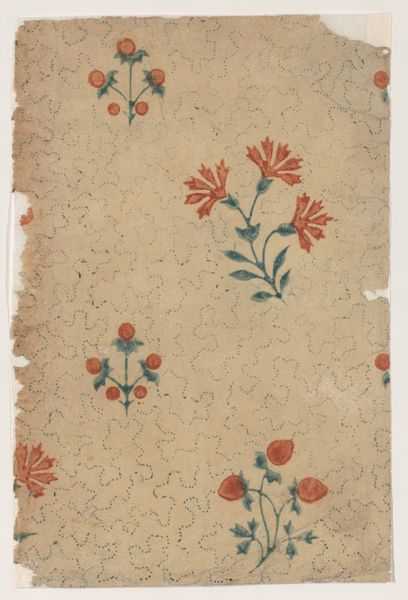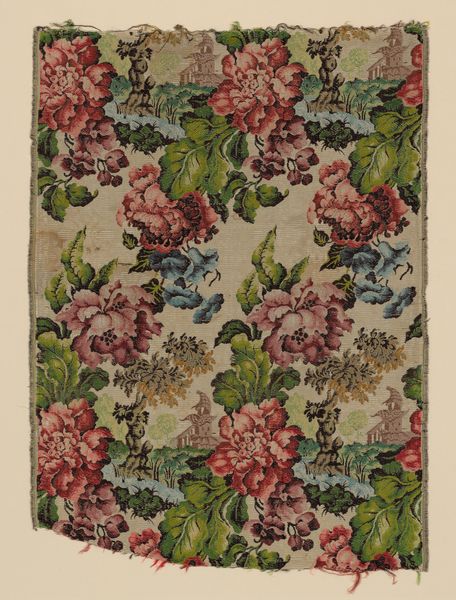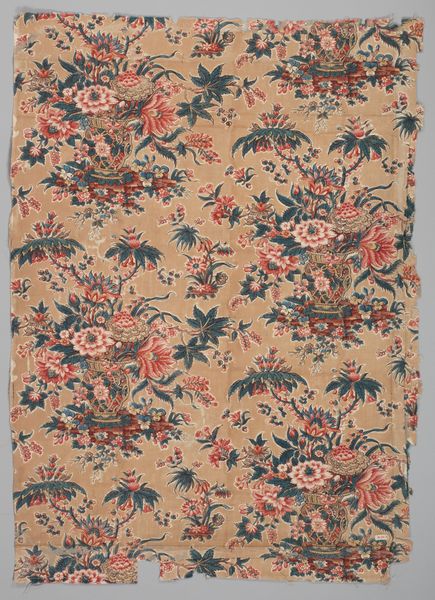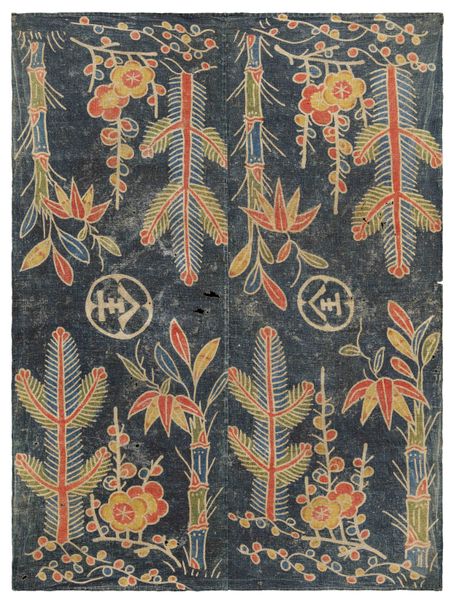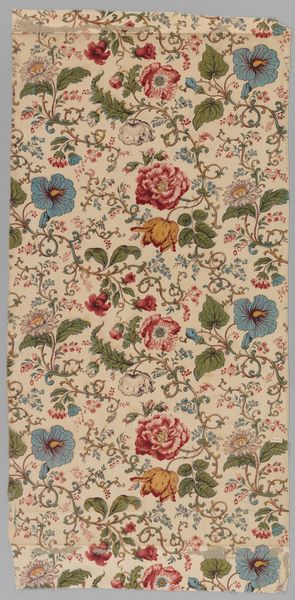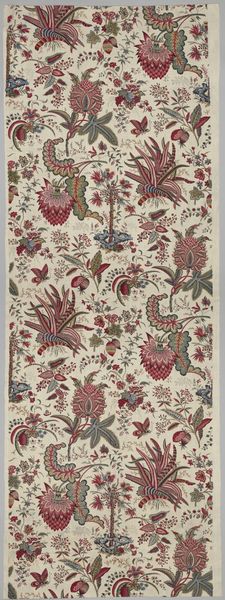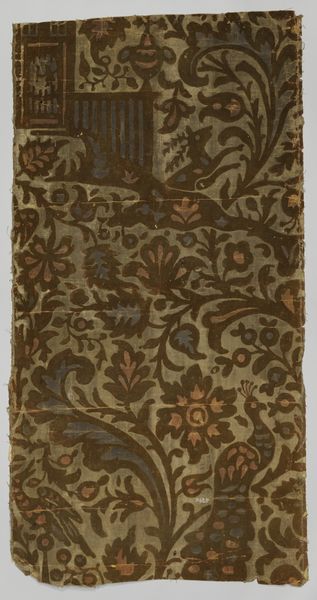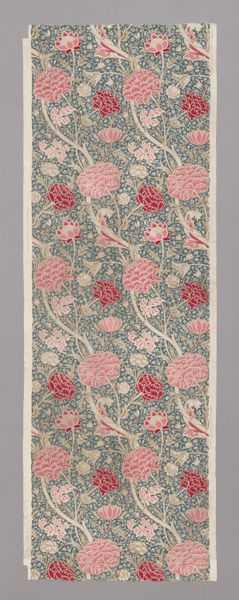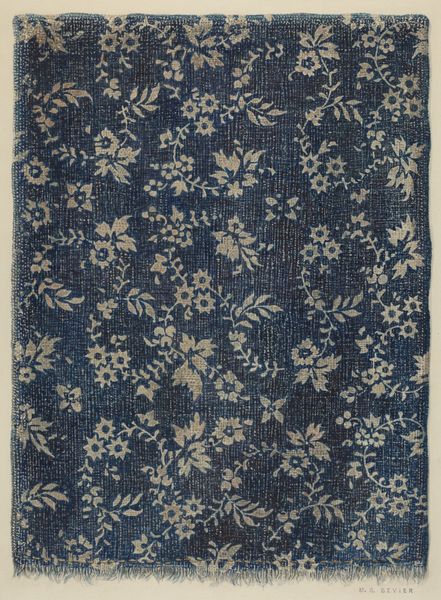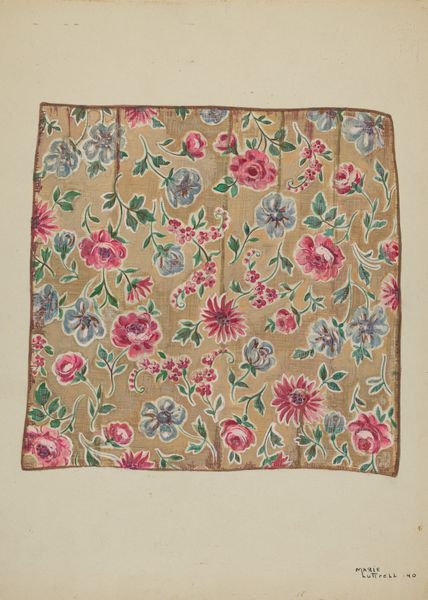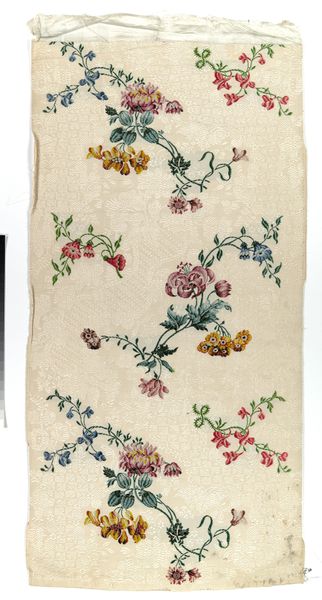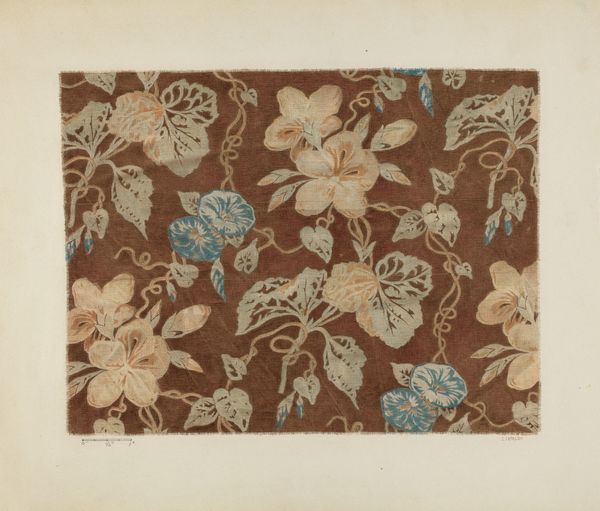
drawing, paper
#
pattern-and-decoration
#
drawing
#
paper
#
geometric pattern
#
pattern background
#
flower pattern
#
decorative-art
Dimensions: 78.1 × 50.5 cm (30 3/4 × 19 7/8 in.)
Copyright: Public Domain
Editor: This is "Mise-en-carte (Point-paper)," made after 1780, and attributed to Germain Frères. It's a drawing on paper intended as a textile design. I'm immediately struck by the almost overwhelming density of the floral pattern and the controlled, grid-like background it’s set against. How do you interpret this work? Curator: The tension you identify between the rigid grid and the explosion of floral imagery is really key. "Mise-en-carte," essentially translates to 'putting into the grid', a coded weaving draft for textiles. These weren’t simply aesthetic choices but encoded systems reflecting a hierarchical society that commodified both labor and artistry. What might this intersection reveal about power dynamics of the time? Editor: Well, the vibrant Rococo style feels like an embrace of luxury, but the underlying grid hints at industrialization. It’s a very stylish design, but I guess it also raises questions about production and maybe even exploitation. Curator: Precisely. The floral motifs are a clear nod to Rococo, a style associated with the French aristocracy. The 'Pattern and Decoration' movement later recognized such textiles and designs as valid art forms, often resisting the established hierarchies of what constitutes "high" art. Considering that this textile design was created around the time of the French Revolution, do you think it foreshadows any impending shifts? Editor: It's strange to think of revolution brewing beneath something so seemingly delicate and beautiful. Maybe it’s a last gasp of a dying aesthetic, even if it became very popular. I now also feel conflicted because it looks so innocuous, yet when viewed critically this geometric floral pattern has its own voice within those socio-historical movements. Curator: Yes, viewing artworks through that lens opens us to many socio-historical stories that speak to our time. Thank you, I have learned a lot, too!
Comments
No comments
Be the first to comment and join the conversation on the ultimate creative platform.
